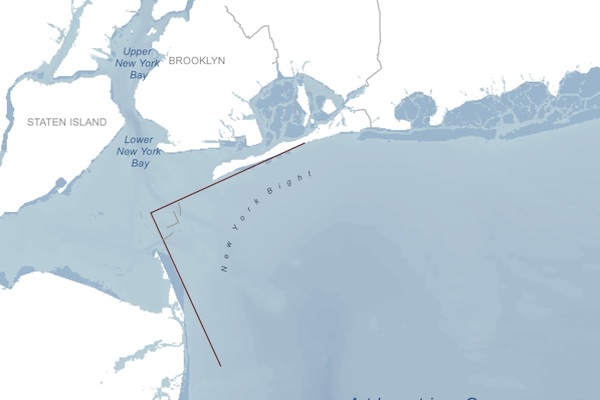
Photo by: OEM
Big Bight, Big City: The unique curvature of the metropolitan region’s coastlne is one reason why New York is considered especially vulnerable to hurricanes.
There are a lot of reasons—of varying degrees of rationality—upon which people base their fear of New York City. Crime. Rats. Disease. Terrorism. Traffic. Hurricanes aren’t usually among the nightmares associated with the nation’s largest city.
But even though Miami gets the college football team and New Orleans the mixed drink, New York has long been considered among the most hurricane-vulnerable cities. By one ranking, it’s the second-most at-risk city on the East Coast.
One reason is simply our size. According to the New York City Office of Emergency Management, some 2.3 million people live within areas of the city that would be at dire risk in a category 3 or 4 storm. That’s three times the population of Miami and New Orleans combined. The more people in an area, the greater potential human impact of an area’s natural vulnerability—and the harder it is to evacuate all those people. This is particularly true in New York, where access to cars is lower than in any other major American city.
Another risk factor is the city’s extensive waterfront: New York City has 578 miles of coastline, with four of its five boroughs on islands and several bays, basins, canals, creeks and rivers channeling into the city’s interior. (Those internal waterways can play a critical role: The flooding in New Orleans after Katrina didn’t happen because levees along the Mississippi River or the edge of Lake Ponchartrain broke. It was thanks to failures along the canals that had been dug through and around the city to provide drainage or short-cuts for shipping.)
Finally, there’s the New York Bight—the unique shape of the coastline around the city, where the Jersey coast and the NYC-Long Island shoreline meet at what’s roughly a right angle. With the land forming a kind of funnel, storm surge from even a moderate hurricane gets magnified in the bight. The bight is the reason why, despite being hundreds of miles north of Nola or Miami, New York is considered equally if not more vulnerable to hurricanes.
But “the big one,” as some scientists call it, is still unlikely. In any one hurricane season, there’s a 2.6 percent chance New York will get a storm. In a 50-year period, the chance of a severe storm—category 3 or higher—is but 3.3 percent.







